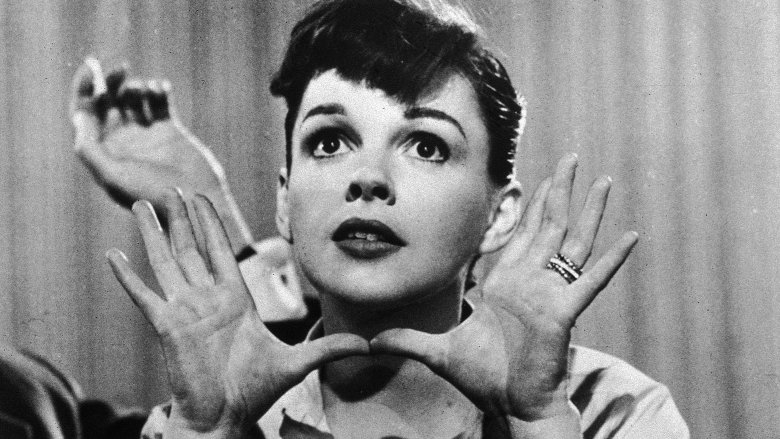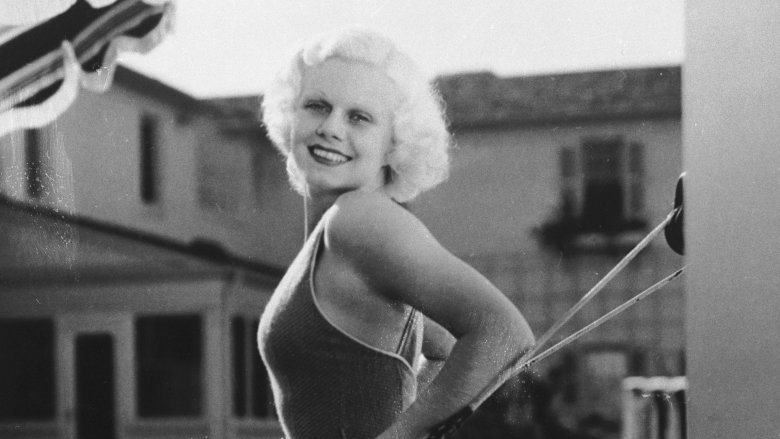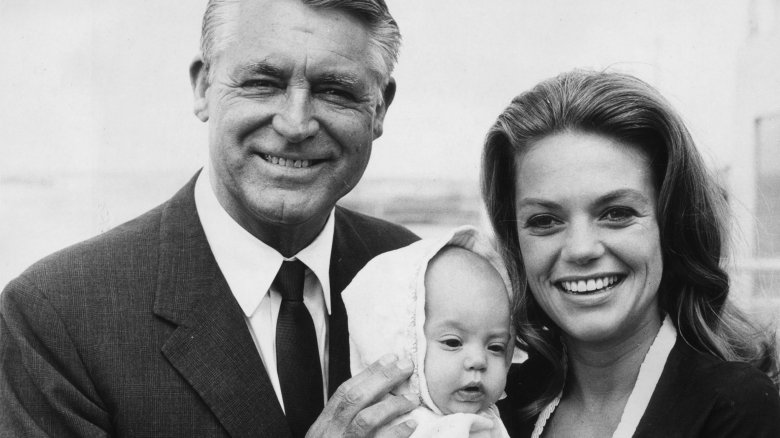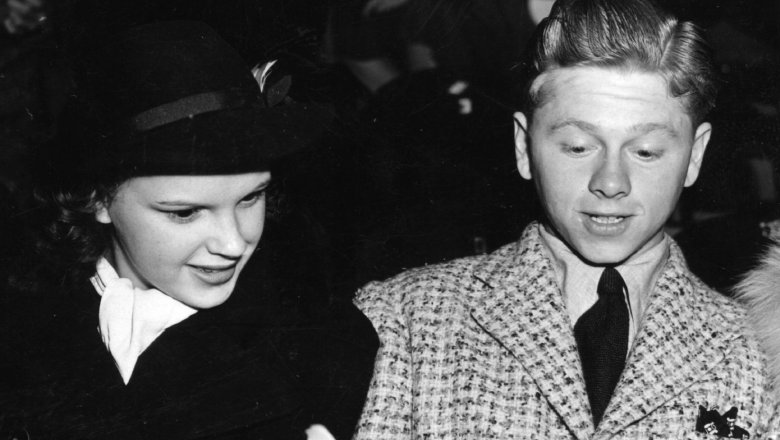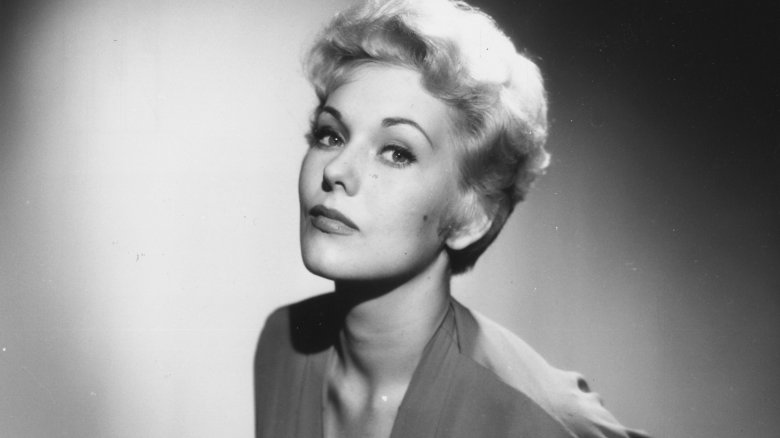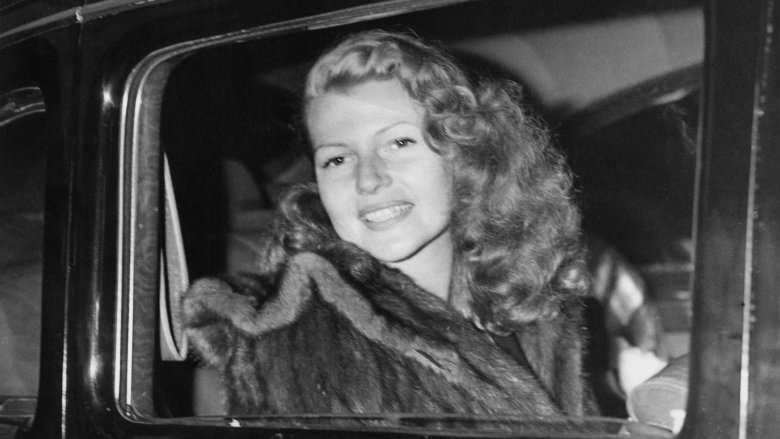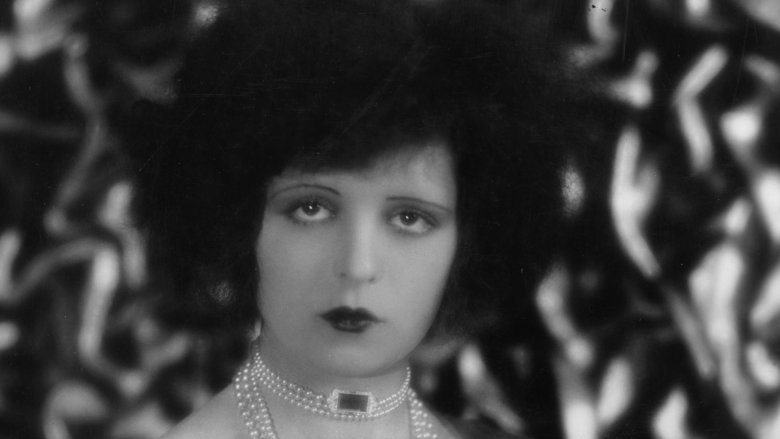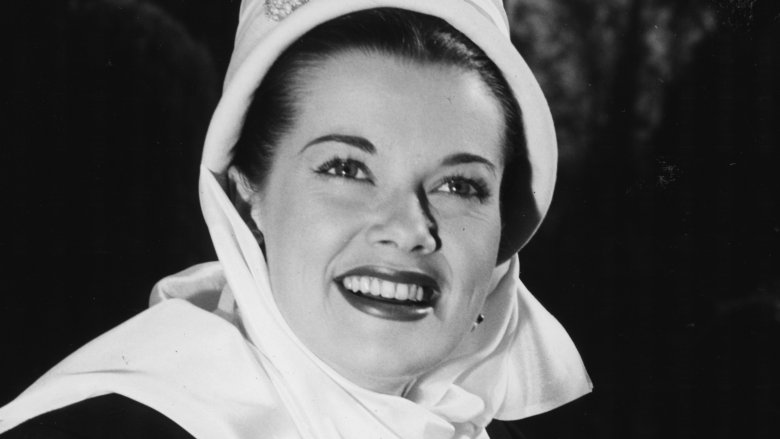Horrific Ways The Old Hollywood Studios Abused Actors
It's easy to idealize old Hollywood when looking back on all the classic movies and their iconic stars. Everything just appeared a tad more wholesome, especially compared to entertainment today. And yet, as time goes on, we learn more and more about what life was really like for actors during the years when Hollywood executives were running the show and when many performers were under contract with big studios, the heads of which were often formidable presences who wielded their power with seeming impunity.
Despite holding megastar (and oftentimes mega money-making) status, old Hollywood's actors were still extremely vulnerable to the rules laid down by these powerful men — and to their unpredictable whims. As such, it should come as no surprise to learn that these actors' lives weren't exactly blessed with nonstop glamour. Read on to learn all about the horrific ways in which the studio system exploited its on-screen talent.
They forced actresses to have abortions
It seems unthinkable that old Hollywood studios would have had this degree of intimate control over their stars' bodies, but, shockingly, they forced multiple actresses to undergo abortions in order to cover up potential publicity problems and to protect their images. As Vanity Fair detailed in a searing expose, major stars like Jean Harlow (pictured), Tallulah Bankhead, Joan Crawford, , Dorothy Dandridge, Lana Turner, and Bette Davis, among others, were all coerced into having abortions when they became unexpectedly pregnant.
According to Vanity Fair, "morality clauses" were incorporated into studio's agreements with actors in 1922. Thus, "an unintended pregnancy would not only bring shame to these top box-office earners — it would violate studio policy." Accordingly, actresses worried that not complying with the studios' demands that they maintain their images would mean they'd lose their careers. Vanity Fair quotes actress Ava Gardner, who had an abortion while she was married to Frank Sinatra, as saying, "If I had [a baby], my salary would be cut off. So how could I make a living? Frank was broke and my future movies were going to take me all over the world ... MGM made all the arrangements for me to fly to London. Someone from the studio was with me all the time. The abortion was hush hush ... very discreet."
They made actors tie the knot to hide their true sexualities
Along with controlling their stars' bodies, major movie studios also had a heavy hand in hiding aspects of their actors' private lives that they believed the public wouldn't be exactly cool with at the time. Specifically, as described in Michael R. Kauth's book True Nature: A Theory of Sexuality, actor Rock Hudson (who later acknowledged his homosexuality at the end of his life) was forced by a major movie studio to marry Phyllis Gates in the 1950s in order to cover up the fact that he was gay.
Similarly, Slate detailed how Cary Grant (pictured) was "willing to play by the rules of the game that [Metro-Goldwyn-Mayer studios co-founder] Louis B. Mayer and the other studio moguls set." Grant was actually married five times to five different women, although former prostitute and pimp Scotty Bowers would later claim in his memoir Full Service that he had enjoyed multiple sexual encounters with Grant and his male partner, Randolph Scott (via The Daily Beast).
One star, however, resisted the studio system's attempt at keeping him in the closet. As Slate described, actor William Haines was reportedly called to Louis B. Mayer's office and told that he had to leave his male lover and get married to a woman. Haines refused, dropped out of Hollywood, and became a successful interior designer instead.
They said 'yes' to drugs ... and child labor
Young actress Judy Garland was signed to a contract with MGM studio in 1935 when she was just 13 years old. The studio quickly put her to work, pairing her up with fellow child actor Mickey Rooney and forcing her to adhere to a grueling schedule of singing and dance rehearsals. According to Timeline, the young stars frequently worked as many as six days a week, often for 18 hour days. In order to keep energy levels high and Garland's weight down, she was supplied with a steady stream of amphetamines.
Before her death of a drug overdose at just 47 years old in 1969, Garland herself reflected on the manner in which the studio controlled her and her young co-star through drugs and nonstop work, saying, "They'd give us pills to keep us on our feet long after we were exhausted. Then they'd take us to the studio hospital and knock us out with sleeping pills — Mickey (Rooney) sprawled out on one bed and me on another. Then after four hours they'd wake us up and give us the pep pills again so we could work 72 hours in a row" (via The Daily Express).
They acted like overbearing dads and forbade some relationships
While old Hollywood studios were busy arranging marriages, they also meddled in people's private lives to prevent other relationships from flourishing. Perhaps most notably, in the late 1950s, head of Columbia Pictures Harry Cohn famously stepped in to prevent actress Kim Novak (pictured) and Brat Pack member Sammy Davis Jr. from carrying on their affair.
As Vanity Fair detailed, Cohn (who "wanted to be known as the toughest, meanest mogul in Hollywood") was reportedly incensed that "his" star, a white woman, would be involved with a black man. His attitude heavily reflected the worst of the times: the Civil Rights Act had not yet been signed and segregation was still legal throughout the U.S. According to the magazine, Cohn even pulled on his mob connections to frighten Davis Jr. into ending the relationship. Smithsonian Magazine writes that Cohn put a hit on Davis Jr. Davis Jr.'s friend Arthur Silber recounted that, "They said they would break both of his legs, put out his other eye, and bury him in a hole if he didn't marry a black woman right away."
Davis Jr. took the threat seriously and married a black singer named Loray White (who he paid a lump sum of money) to draw attention away from him and Novak. The relationship between Davis and Novak ended, and Cohn died in 1958.
They forced stars to undergo painful and drastic makeovers
Considering how controlling the studios were over their stable of talent, it's not surprising that their iron grip extended to how their actresses looked (after all, appearances still rule Hollywood). Some stars had to go to seriously great lengths to change their appearance to satisfy their studio bosses. According to Marie Claire, actress Rita Hayworth (original name Margarita Cansino) was forced to undergo a year of painful electrolysis to inch her hairline back, a process that Marilyn Monroe also allegedly used to remove her widow's peak. As The Hairpin details, Rita Hayworth's makeover was the result of Columbia Studio's desire to "de-latinize" their new star. Hayworth also dieted and dyed her dark hair red, a color that would become her signature.
According to Zadie Smith in The Guardian, when actress Greta Garbo was brought over to the U.S. from Germany in the 1920s, MGM studio head Louis B. Mayer reportedly remarked, "In America, we don't like fat women." Garbo went on a strict regimen of eating only spinach to lose weight, and kept it off for the rest of her career through a bizarre and restrictive diet.
A young Judy Garland was also frequently maligned by the studio heads for her weight and, as previously described, turned to drugs as means of controlling it.
They ghosted struggling stars
Silent film actress Clara Bow is known by many as the original Hollywood starlet and an icon of the flapper era. Her career took off after she starred in the 1926 film It, earning her the title of "It Girl." However, according to Mental Floss, her uptick in popularity also led to the proliferation of multiple rumors about her sex life (including one that she had slept with the entire starting lineup of a football team), and Hollywood turned an increasingly cautious eye to the outspoken young star.
As Vogue describes, Bow had endured a number of traumas early on in her life, including abuse at the hands of her alcoholic father and schizophrenic mother. She would eventually suffer a total breakdown at 25 years old while filming the movie Kick In in 1931. Rather than support their money-making star, her studio Paramount promptly fired her and left her flailing. She officially retired from films in 1933, and died a recluse in 1965.
They needed a #MeToo movement of their own
As the #MeToo movement shines a light on sexual harassment and assault, it's important to understand just how far back these behaviors go. In 2017, Variety published an article citing old Hollywood bigwigs MGM head Louis B. Mayer, Harry Cohn of Columbia Pictures, and Jack Warner of Warner Bros. as noted perpetrators of the "casting couch" phenomenon, in which hopeful actresses were subjected to unwanted sexual advances with the promise of getting ahead in their careers.
As noted by Newsweek, actress Shirley Temple wrote in her memoir that an MGM producer had exposed himself to her when she was just 12. And she wasn't alone. As detailed by The Guardian, a young actress named Patricia Douglas was raped by a sales executive during a 1937 party for MGM studios. When Douglas pressed charges against he man, MGM pummeled her in the press until she withdrew the accusation. In 2017, actress Janis Paige (pictured) penned an essay for The Hollywood Reporter in which she detailed how, just after she'd signed to Warner Bros. at age 22, a director handed her off to a man named Alfred Bloomingdale for dinner. Bloomingdale reportedly sexually assaulted her, but Paige writes, "the fear for my job, the fear that no one would believe me and the shame I felt at the betrayal of myself kept me quiet all these years."

